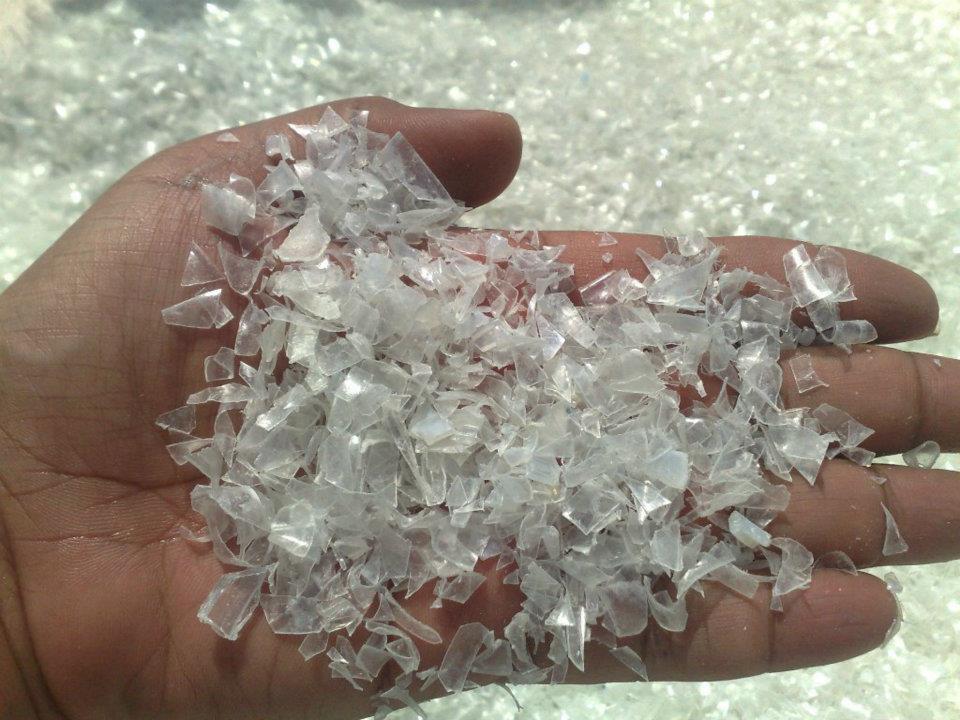Understanding
the Circular Economy
A Sustainable Paradigm for the Future
A circular economy is a model of economic activity that aims to reduce waste and promote sustainability by keeping resources in use for as long as possible. In a circular economy, resources are not extracted, used, and then discarded, but are instead recovered, regenerated, and reused in a closed-loop system.
Add your title here
This is the text area for this paragraph. To change it, simply click and start typing. Once you've added your content, you can customize its design by using different colors, fonts, font sizes and bullets. Just highlight the words you want to design and choose from the various options in the text editing bar.
This is the text area for this paragraph. To change it, simply click and start typing. After adding your content, you can customize it.
Welcome to an exploration of the circular economy, a sustainable paradigm that holds incredible promise for the future. In a world grappling with environmental challenges and resource scarcity, the circular economy offers a fresh approach to economic growth that is regenerative by design. By rethinking the way we produce, consume, and dispose of products, the circular economy aims to reduce waste, minimize resource extraction, and promote the use of renewable materials.
At its core, the circular economy is about closing the loop, ensuring that materials and products stay in use for as long as possible and are then reused, refurbished, or recycled. This shift away from the traditional linear "take-make-dispose" model is not only environmentally friendly but also has the potential to unlock significant economic opportunities. Pioneering businesses and governments are already embracing this approach, recognizing that it can drive innovation, create jobs, and lead to cost savings.
In this article, we will delve into the principles and benefits of the circular economy, highlighting real-world examples and insights. Join us as we unravel this sustainable paradigm that holds the key to a more prosperous and environmentally sound future.
What is the circular economy?
The circular economy is a concept that challenges the traditional linear model of production and consumption.
Instead of the "take-make-dispose" approach, the circular economy focuses on closing the loop, ensuring that materials and products stay in use for as long as possible and are then reused, refurbished, or recycled. It is a systemic and holistic approach that considers the entire lifecycle of products, from raw material extraction to end-of-life disposal.
The circular economy is based on three main principles: reduce, reuse, and recycle. By reducing the amount of waste generated, reusing products and materials, and recycling them at the end of their useful life, we can create a more sustainable and efficient system.
The principles of the circular economy
The circular economy is guided by several key principles that shape its approach to sustainable growth. These principles include:
List of Services
-
Design for durability and longevity:Item Link List Item 1
Products should be designed to last longer and be easily repairable. This reduces the need for frequent replacements and extends the lifespan of products.
-
Embrace renewable resources:Item Link List Item 2
The circular economy promotes the use of renewable materials and energy sources, reducing our dependence on finite resources and minimizing environmental impact.
-
Promote resource efficiency:Item Link List Item 3
The circular economy aims to maximize the value extracted from resources by keeping them in use for as long as possible. This includes strategies such as remanufacturing, refurbishing, and repurposing products.
-
Foster collaboration and innovation:Item Link List Item 4
The circular economy requires collaboration between businesses, governments, and consumers to create a more sustainable system. It also encourages innovation in product design, business models, and recycling technologies.
Benefits of transitioning to a circular economy
The transition to a circular economy offers numerous benefits for both the environment and the economy. Here are some of the key advantages:
List of Services
-
Reduced waste and pollution:Item Link List Item 1
By keeping materials and products in use for longer, the circular economy minimizes waste generation and reduces pollution. This helps to preserve natural resources and protect ecosystems.
-
Conservation of resources:Item Link List Item 2
The circular economy aims to minimize resource extraction by promoting reuse and recycling. This conserves valuable resources such as minerals, metals, and water, reducing the strain on the environment.
-
Job creation and economic growth:Item Link List Item 3
The circular economy has the potential to create new job opportunities in industries such as recycling, remanufacturing, and repair. It also stimulates economic growth by promoting innovation and reducing production costs.
-
Increased resilience and supply chain security:Item Link List Item 4
The circular economy reduces dependence on scarce and volatile resources, making businesses and economies more resilient to disruptions in the supply chain. It also enhances resource security by diversifying material sources and reducing reliance on imports.
-
Improved quality of life:Item Link
The circular economy promotes the production of high-quality, durable products that are designed to meet the needs of consumers. This leads to greater customer satisfaction and a higher quality of life.
case studies
Circular economy examples and success stories
The circular economy is not just a theoretical concept – it is already being put into practice by forward-thinking businesses and governments around the world. Here are some examples of successful circular economy initiatives:
List of Services
-
Interface:Item Link List Item 1
Interface, a global carpet manufacturer, has embraced the circular economy by implementing a take-back program for its products. After use, the carpets are collected, recycled, and turned into new carpet tiles. This closed-loop system not only reduces waste but also reduces the company's environmental footprint
-
Philips:Item Link List Item 2
Philips, a leading electronics company, has adopted a circular business model for its lighting products. Instead of selling light bulbs, the company now offers lighting as a service. Customers pay for the amount of light they use, while Philips retains ownership of the products and is responsible for maintenance and recycling. This model promotes resource efficiency and encourages the use of energy-efficient lighting solutions.
-
The Netherlands:Item Link List Item 3
The Netherlands has made significant progress in transitioning to a circular economy. The government has set ambitious targets to achieve a fully circular economy by 2050 and has implemented various policies and initiatives to support this goal. For example, the country has established the Circular Economy Program, which provides funding and support for circular projects and innovations.
Challenges and barriers to implementing a circular economy
While the circular economy offers great potential, there are also challenges and barriers that need to be overcome for its widespread adoption. Some of the main challenges include:
- Lack of awareness and understanding: Many businesses and consumers are still unfamiliar with the concept of the circular economy and its benefits. Education and awareness campaigns are needed to increase understanding and drive behavior change.
- Regulatory and policy barriers: Existing regulations and policies may not be conducive to circular economy practices. Governments need to create an enabling environment by implementing supportive policies, providing incentives, and removing barriers
- Financial constraints: Transitioning to a circular economy requires upfront investments in infrastructure, technology, and research. Many businesses may face financial constraints and reluctance to invest in circular practices without clear economic incentives.
- Fragmented value chains: The linear economy is characterized by fragmented value chains, with different stakeholders having limited visibility and cooperation. The circular economy requires collaboration and integration across the value chain, which can be challenging to achieve.
How businesses can adopt circular economy practices
Businesses play a crucial role in driving the transition to a circular economy. Here are some strategies that businesses can adopt to embrace circular economy practices:
- Redesign products for circularity: Businesses can redesign products to make them more durable, repairable, and recyclable. This involves considering the entire lifecycle of the product and incorporating circular design principles.
- Implement take-back and recycling programs: Businesses can establish take-back programs to collect and recycle their products at the end of their useful life. This not only reduces waste but also creates opportunities for remanufacturing and recycling.
- Embrace sharing and collaborative consumption: Sharing platforms and collaborative consumption models can help businesses maximize the use of their products and resources. This includes strategies such as product leasing, rental services, and sharing economy platforms.
- Engage with suppliers and customers: Businesses can collaborate with suppliers and customers to promote circular practices. This can involve sharing information, setting sustainability targets, and encouraging responsible consumption and production.
Tools and resources for implementing a circular economy
Implementing a circular economy requires access to the right tools and resources. Fortunately, there are several initiatives and organizations that provide guidance and support. Here are some notable resources:
- Ellen MacArthur Foundation: The Ellen MacArthur Foundation is a leading organization that promotes the transition to a circular economy. They provide research, case studies, and practical tools for businesses, governments, and academia.
- Circular Economy Club: The Circular Economy Club is a global network of circular economy professionals and enthusiasts. They organize events, webinars, and knowledge-sharing sessions to foster collaboration and learning.
- Circulate: Circulate is an online platform that provides news, insights, and resources on the circular economy. It covers a wide range of topics, including circular design, business models, and policy developments.
- Circular Economy Toolbox: The Circular Economy Toolbox is an interactive online platform that provides practical guidance for implementing circular economy strategies. It includes tools, case studies, and resources for different industries and sectors.
Conclusion:
Embracing the circular economy for a sustainable future
The circular economy offers a sustainable and regenerative approach to economic growth, addressing the pressing challenges of resource scarcity and environmental degradation. By closing the loop and rethinking the way we produce, consume, and dispose of products, we can create a more efficient and resilient system. The circular economy not only benefits the environment by reducing waste and conserving resources but also presents significant economic opportunities, including job creation, innovation, and cost savings.
As businesses, governments, and individuals, we have the power to shape the future and drive the transition to a circular economy. By adopting circular practices, redesigning products, implementing take-back programs, and collaborating across value chains, we can create a more sustainable and prosperous world for current and future generations. Let us embrace the circular economy and unlock its full potential for a better future.





